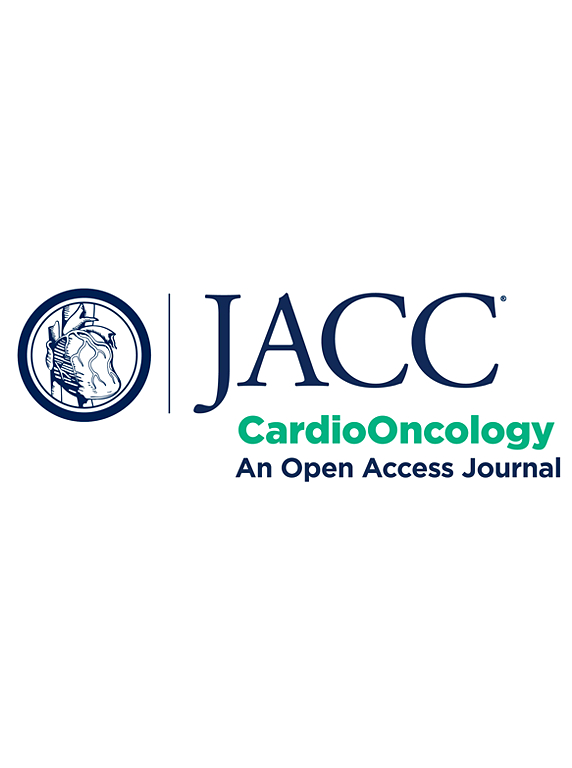Postural Orthostatic Tachycardia Syndrome and Orthostatic Hypotension Following Hematopoietic Stem Cell Transplantation
IF 12.8
1区 医学
Q1 CARDIAC & CARDIOVASCULAR SYSTEMS
引用次数: 0
Abstract
Background
Postural orthostatic tachycardia (POTS) and orthostatic hypotension (OH) commonly occur after hematopoietic stem cell transplantation (HSCT).
Objectives
This study sought to determine the prevalence of POTS and OH before HSCT and the incidence of new cases after HSCT.
Methods
In this single-center, prospective study, patients were evaluated 30 days before and 30 and 100 days after HSCT. Blood pressure, heart rate, and plasma norepinephrine levels were measured in the supine position and after a 10-minute active stand test to assess for POTS or OH. After HSCT, adrenergic receptor (AR)–modulating autoantibody activity was measured in 8 subjects with POTS and 8 without.
Results
Among 46 patients, 40 (87.0%) underwent autologous and 6 (13.0%) allogeneic HSCT. Multiple myeloma was the most common indication (67.4%). Before HSCT, the prevalence of both POTS and OH was 4.3%. At 30 days after HSCT, POTS was present in 10 (25.6%) of 39 patients, including 9 (23.1%) new cases, and OH in 6 (15.4%), including 5 (12.8%) new cases. Patients with POTS at 30 days showed a significantly greater increase in norepinephrine levels upon standing (median 231% [Q1-Q3: 179%-343%]) compared with before HSCT (median 100% [Q1-Q3: 62%-183%]) (P = 0.005), which positively correlated with heart rate changes. AR-modulating autoantibody activity was also higher in patients with POTS vs those without and directly correlated with heart rate changes.
Conclusions
Approximately 1 in 4 patients developed POTS after HSCT, characterized by exaggerated increases in norepinephrine upon standing and elevated AR-modulating autoantibody activity.
造血干细胞移植后体位性心动过速综合征和体位性低血压
背景:体位性体位性心动过速(POTS)和体位性低血压(OH)常见于造血干细胞移植(HSCT)后。目的本研究旨在确定移植前POTS和OH的患病率以及移植后新发病例的发生率。方法在这项单中心前瞻性研究中,对患者在移植前30天、移植后30天和100天进行评估。在仰卧位和站立10分钟后测量血压、心率和血浆去甲肾上腺素水平,以评估POTS或OH。HSCT后,8例有POTS和8例无POTS的受试者测量肾上腺素能受体(AR)调节自身抗体的活性。结果46例患者中,40例(87.0%)行自体移植,6例(13.0%)行同种异体移植。多发性骨髓瘤是最常见的适应症(67.4%)。在HSCT之前,POTS和OH的患病率均为4.3%。移植后30天,39例患者中有10例(25.6%)出现POTS,其中9例(23.1%)为新发病例,6例(15.4%)为OH,其中5例(12.8%)为新发病例。POTS患者30天站立时去甲肾上腺素水平(中位数为231% [Q1-Q3: 179%-343%])明显高于HSCT前(中位数为100% [Q1-Q3: 62%-183%]) (P = 0.005),且与心率变化呈正相关。与无POTS患者相比,有ar调节的自身抗体活性也更高,并与心率变化直接相关。结论大约1 / 4的患者在HSCT后发生了POTS,其特征是站立时去甲肾上腺素的过度增加和ar调节自身抗体活性的升高。
本文章由计算机程序翻译,如有差异,请以英文原文为准。
求助全文
约1分钟内获得全文
求助全文
来源期刊

Jacc: Cardiooncology
Multiple-
CiteScore
12.50
自引率
6.30%
发文量
106
期刊介绍:
JACC: CardioOncology is a specialized journal that belongs to the esteemed Journal of the American College of Cardiology (JACC) family. Its purpose is to enhance cardiovascular care for cancer patients by publishing high-quality, innovative scientific research and sharing evidence-based knowledge.
The journal aims to revolutionize the field of cardio-oncology and actively involve and educate professionals in both cardiovascular and oncology fields. It covers a wide range of topics including pre-clinical, translational, and clinical research, as well as best practices in cardio-oncology. Key areas of focus include understanding disease mechanisms, utilizing in vitro and in vivo models, exploring novel and traditional therapeutics (across Phase I-IV trials), studying epidemiology, employing precision medicine, and investigating primary and secondary prevention.
Amyloidosis, cardiovascular risk factors, heart failure, and vascular disease are some examples of the disease states that are of particular interest to the journal. However, it welcomes research on other relevant conditions as well.
 求助内容:
求助内容: 应助结果提醒方式:
应助结果提醒方式:


